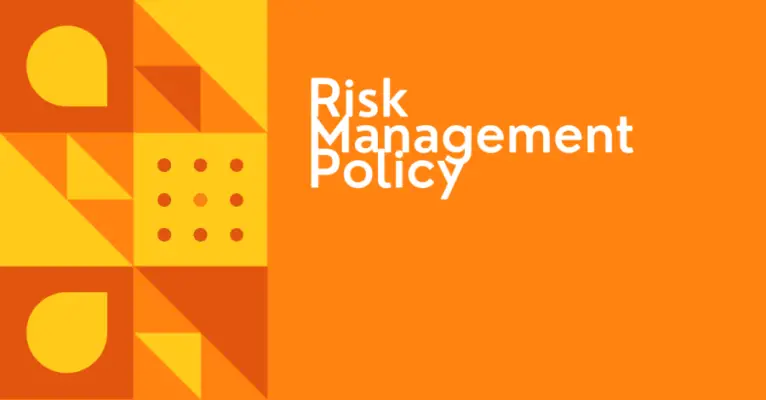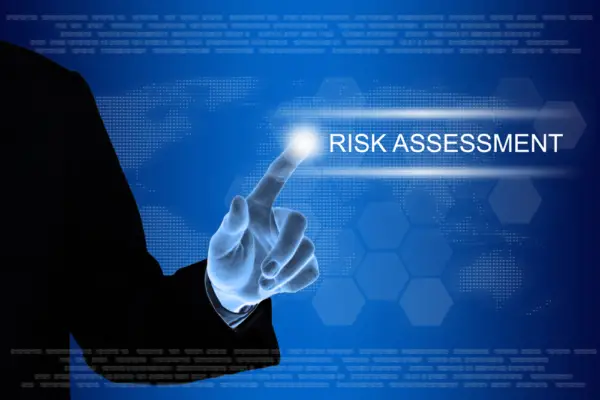Risk assessment stands as a comprehensive tool that aids in the identification, evaluation, and prioritization of potential hazards.
When incorporated systematically and strategically, this practice can significantly mitigate the potential negative impacts of unforeseen circumstances on an organization’s operations.
Therefore, developing a risk assessment policy is a critical undertaking that demands a meticulous approach.
This article provides an insightful guide to formulating such a policy, encompassing purpose, scope, policy statement, associated policies, procedures, and a policy disclaimer statement.
The main focus of this exposition is to guide organizations in creating a strong risk assessment policy by emphasizing the importance of risk appetite. It offers practical advice to fortify risk management strategies and proactively approach potential threats.
This resource is invaluable for those seeking to enhance their risk management practices and should not be overlooked.

How to Write a Risk Management Policy
Crafting a comprehensive risk management policy necessitates meticulous attention to potential threats and strategic measures for mitigating these risks in an organizational context.
A key step in this process is developing a structured risk management framework, which should incorporate the risk management process, risk assessment process, and risk controls.
This framework is designed to guide the management team in identifying, evaluating, and prioritizing risks. It also provides strategies for addressing the potential impact of these risks on the organization.
Senior management has a crucial role in developing and implementing risk management policies. Their involvement ensures that the policies are aligned with the organization’s objectives and effectively communicated and enforced across all levels of the organization.
Purpose
The objective of instituting such a strategic measure is to identify potential threats, evaluate their possible impact, and formulate appropriate responses to mitigate the consequences.
A risk assessment policy provides a systematic approach to identifying and managing risks. This policy is a guiding document for developing risk management controls based on risk assessment findings.
The risk assessment policy typically focuses on the following:
- Identification and evaluation of potential risks
- Development of risk treatment options
- Implementation of systematic risk management controls
- Regular reporting and review of risk assessment findings
- Continuous enhancement of the risk management process
In essence, the policy aids in creating a robust risk management framework, proactively addressing potential threats.
Scope
Understanding the extent of the measures employed is crucial in ensuring that all potential vulnerabilities within an organization are comprehensively addressed.
The scope of a risk assessment policy should be expansive, covering all business operations. This includes internal and external factors, fostering a pervasive organizational risk management culture.
The scope should be tailored to the organization’s risk profile, considering the nature of its activities and the environment in which it operates.
The risk assessment program and compliance objectives should align with the scope, ensuring that the policy effectively identifies, evaluates, and controls risks.
Ultimately, the scope should provide a clear risk management boundary, helping establish a robust and resilient organizational framework.
Policy Statement
Formulating a policy statement provides a fundamental elucidation of the organization’s approach toward risk management.
This integral document typically delineates an institution’s risk appetite, the parameters within which risks are to be managed, and the responsibilities of various stakeholders.
Further, it is crucial to understand and articulate the definitions of terms within the policy statement, as this promotes clarity, facilitates effective communication, and ensures alignment of the organization’s risk management strategy.
Definitions
Key terminology relevant to risk assessment policy development encompasses several concepts, including risk, risk assessment, risk management, and risk mitigation.
- Risk refers to the potential adverse impact of a current process or future event. It is often quantified regarding the magnitude of risks and associated risk levels.
- Risk Assessment: A systematic process for identifying and evaluating risks. It involves security risk assessments, risk analysis, and determining the level of risk tolerance. A risk assessment policy guides this process.
- Risk Owner: The entity responsible for managing a specific risk. This includes implementing measures for risk mitigation and managing the residual risk in line with the risk assessment policy.
Understanding these definitions is crucial for effective policy development and implementation.
Related Policies and Procedures- Risk Appetite
Examining risk appetite within an organization is a critical aspect of its overall risk management strategy, particularly in the context of third-party dependencies.
This process requires a comprehensive review and understanding of the potential risks associated with our external partnerships and the potential vulnerabilities they may introduce into our operational ecosystem.
Furthermore, maintaining a robust revision history supports the continuous improvement of our risk management practices, providing a record of past decisions and actions and enabling identifying and rectifying any weaknesses or failures.
The importance of informed decision-making for external stakeholders. Security practices, policies, and controls are crucial in avoiding reputational damage. Risk assessment findings and ongoing processes aid the risk manager in identifying critical risks, determining the risk environment, and developing a risk management framework.
The identification and treatment of weak spots, such as credit card security and regulatory compliance, are key tasks that require continual improvement. Upper-level management should take disciplinary action and implement corrective measures to ensure compliance with accepted industry practices.
Business continuity planning and impact analysis are necessary to address disruptive events and meet the expectations of stakeholders.
Opportunities for improvement and management decisions should be based on individual risk assessments and the effectiveness of current risk control measures. Both external and internal risks must be considered, and risk aversion should guide the approach to risk management.
The management team should prioritize cyber security risk management and develop a security risk management plan. The vulnerability pair and the exploitation of vulnerabilities must also be taken into account in the risk assessment program objectives.
The likelihood and magnitude of risks, as well as the level of risk tolerance, should inform the management of risk and the implementation of risk management controls and activities.
Ultimately, the chance of failure can be minimized through a strong risk management culture and strategic objectives aligned with business opportunities.

Risk management across our third-party dependencies
Assessing and managing risks across third-party dependencies is critical in safeguarding our organization from potential vulnerabilities and threats.
The role of a risk manager is pivotal in identifying, analyzing, and evaluating potential risks that might affect the organization’s operations, particularly those associated with third-party dependencies.
External stakeholders, such as suppliers and business partners, significantly influence the organization’s risk profile. Therefore, the risk assessment report must incorporate an evaluation of these third parties to determine the security risks they pose.
Additionally, understanding the regulatory requirements for third-party relationships can help formulate strategies to mitigate potential risks. This approach ensures that the organization maintains compliance while minimizing exposure to potential risks.
Revision History
Maintaining a well-documented revision history for any organization’s procedures, protocols, and strategies is crucial to its operational integrity. The revision history is fundamental in the context of a risk assessment plan, management of risk, and security risk management plan.
The table below provides insight into the importance of revision history in the achievement of risk assessment, the effectiveness of risk treatment, and for continuous improvement purposes.
| Revision History | Importance |
|---|---|
| Update Record | Aids in tracking changes to the risk assessment plan, fostering transparency and accountability. |
| Risk Treatment Effectiveness | Helps in evaluating the effectiveness of risk treatment strategies over time. |
| Continuous Improvement | Facilitates the identification of patterns, enabling continuous improvement in risk management. |
| Compliance Evidence | Serves as evidence of compliance with regulatory requirements related to risk management. |
Policy Disclaimer Statement
Incorporating a comprehensive disclaimer statement into a risk assessment policy is critical to protect the organization from potential liabilities and misinterpretations. The policy disclaimer statement acts as a safeguard, outlining management actions and highlighting the policy’s limitations.
This helps stakeholders make informed decisions while emphasizing the importance of individual responsibility in risk mitigation.
A well-structured disclaimer clarifies the scope and limitations of the risk assessment policy, promoting regulatory compliance and preventing reputational impact.
It ensures legal requirement fulfilment, indicating that the policy is a guideline rather than a guaranteed solution to all risk scenarios.
The disclaimer also aids in managing expectations, informing users that while the policy aids in risk management, it does not eliminate all possible risks.
Thus, a policy disclaimer statement is vital for an effective risk assessment policy.
Frequently Asked Questions
What qualifications should the person creating the risk assessment policy have?
A risk assessment policy creator should possess relevant qualifications, including a degree in risk management, finance, or a related field, and significant experience in risk analysis and policy formulation. Certification in risk management is desirable.
How often should the risk assessment policy be updated?
The frequency of updating a risk assessment policy largely depends on the dynamic nature of the risks involved. Nonetheless, a yearly review is generally recommended, with additional updates as needed based on changing risk factors.
What factors should be considered when determining the organization’s risk appetite?
Determining an organization’s risk appetite should consider factors such as the organization’s strategic objectives, financial capacity, regulatory environment, market conditions, and tolerance for potential losses in adverse scenarios.
How can we train our employees to follow the risk assessment policy effectively?
Effective employee training on risk assessment policy can be achieved through comprehensive workshops, regular refresher courses, and practical simulations. This approach ensures understanding and adherence to policy, thereby mitigating potential organizational risks.
Can the risk assessment policy be customized according to the organization’s specific needs?
Risk assessment policies are highly customizable and designed to suit specific organizational requirements. These policies can be tailored to address unique risks, industry regulations, and the organization’s operational environment.

Conclusion
To sum up, developing a thorough risk assessment policy involves a detailed and cautious approach.
It involves clearly delineating the purpose, scope, policy statement, related policies, and a disclaimer.
The policy should accurately reflect the entity’s risk appetite and be a reliable guide for managing potential risks.
This approach ensures the development of a robust and effective risk management framework, vital for organizational resilience and sustainability.

Chris Ekai is a Risk Management expert with over 10 years of experience in the field. He has a Master’s(MSc) degree in Risk Management from University of Portsmouth and is a CPA and Finance professional. He currently works as a Content Manager at Risk Publishing, writing about Enterprise Risk Management, Business Continuity Management and Project Management.

